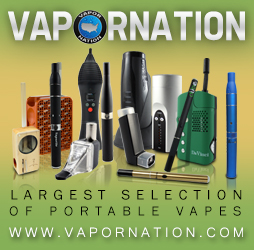Cloth Diapers-What are they and why use them?

What are cloth diapers? Who uses them? Why do we use them? Why did people stop using them? How do I decide what is best for my child, family and caregivers? What is the cost comparison? My family doesn’t want to touch poop diapers, let alone clean them, what do I do? There are so many to choose from, how do I decide? How do I know how many I need?
These are all questions that I asked myself and have looked into for years. My hope is to help you figure out what works best, cloth or disposables. But be cautious my bias is pro-cloth.
What are Cloth Diapers?
According to Wikipedia a Diaper (North America) or a Nappy (United Kingdom, ect) is a sponge-like garment worn by someone who is unable to control their bladder or bowel movements, or are unable or unwilling to use a toilet. I can think of many instances that this may be required! To break it down further a disposable diaper contains absorbent chemicals to hold moisture away from the person wearing the garment and is thrown away after use. A cloth diaper is composed of layers of fabric such as cotton, microfiber or bamboo and can be washed and reused multiple times.
Interesting enough, also according to Wikipedia a disposable product is a product designed for cheapness and short-term convenience rather than medium to long-term durability.
Diapering has been around since the early 19th century. Prior to that mothers used to watch signs of incontinence and would rush their infants to one area so they could excrete in order to avoid messes near their living spaces. The modern diaper of the 19th century included a piece of cotton material held together with a safety pin. And then cloth diapers were first mass produced in 1887.
The evolution of the cloth diaper to disposable diaper happened over 60 years. The invention of a chemical component such as SAP or superabsorbent polymers helped to propel the market for disposable diapering. This chemical compound was initially included in all sanitary products used to absorb body fluids but was discontinued in tampons in 1980 due to a link to toxic shock syndrome. Interestingly this use was continued for disposable diapers where the delicate skin of infants, who spend close to 24hours a day in a diaper, was not discontinued. SAP is know to be used for chemical spills and with underground power cables. As the disposable diaper changed more chemical was added to make them ‘ultra absorbent’. Now we can find Sodium Polyacrylate (absorbent gel that breaks into crystals on the baby’s skin), Organocholorines (Chlorinated toxic bleach which some countries have now banned the use of), and also Polyvinyl Chloride (PVC)( chemical off-gases which the EPA indicates is a health hazard for all areas). This is only a very small list.
I am not surprised that the latest news as of March 2010 indicates that thousands of parents are reporting rashes and chemical burns as a result of the new Pampers Dry-Max technology and a law suit was filed against Proctor & Gamble in May 2010.
So what are cloth diapers? Cloth diapers come in many shapes and forms now and it can become very confusing. There are flat cloth diapers, prefolds, doublers, fitted cloth diapers, cloth diaper covers, all in one cloth diapers, pocket diapers, and Inserts. Almost all of these diapering systems come in a variety of materials such as Hemp, Cotton, Fleece, Bamboo, and Wool. It is no wonder why people reach for disposables as a first option, there is less variety. Through Little P Baby Store, I hope to clarify all these types so you can make an informed decision.
Look for my next series of Articles for clarification.
I am a first time mom that loves all things natural and organic.
Related Posts

websites that sell GOOD hemp necklaces?
I love hemp necklaces and i can NEVER find them in stores, i googled “hemp necklaces” and i... Read More »

My hemp necklace finally broke. Where can I get one that’s just as nice?
Ok, I got a great hemp necklace at Ozzfest 06. It was made by some rasta dude that... Read More »

question about hemp jewellery making.?
i want to know what size the thicker hemp is? i got some 10lbs and 20lbs hemp but... Read More »









